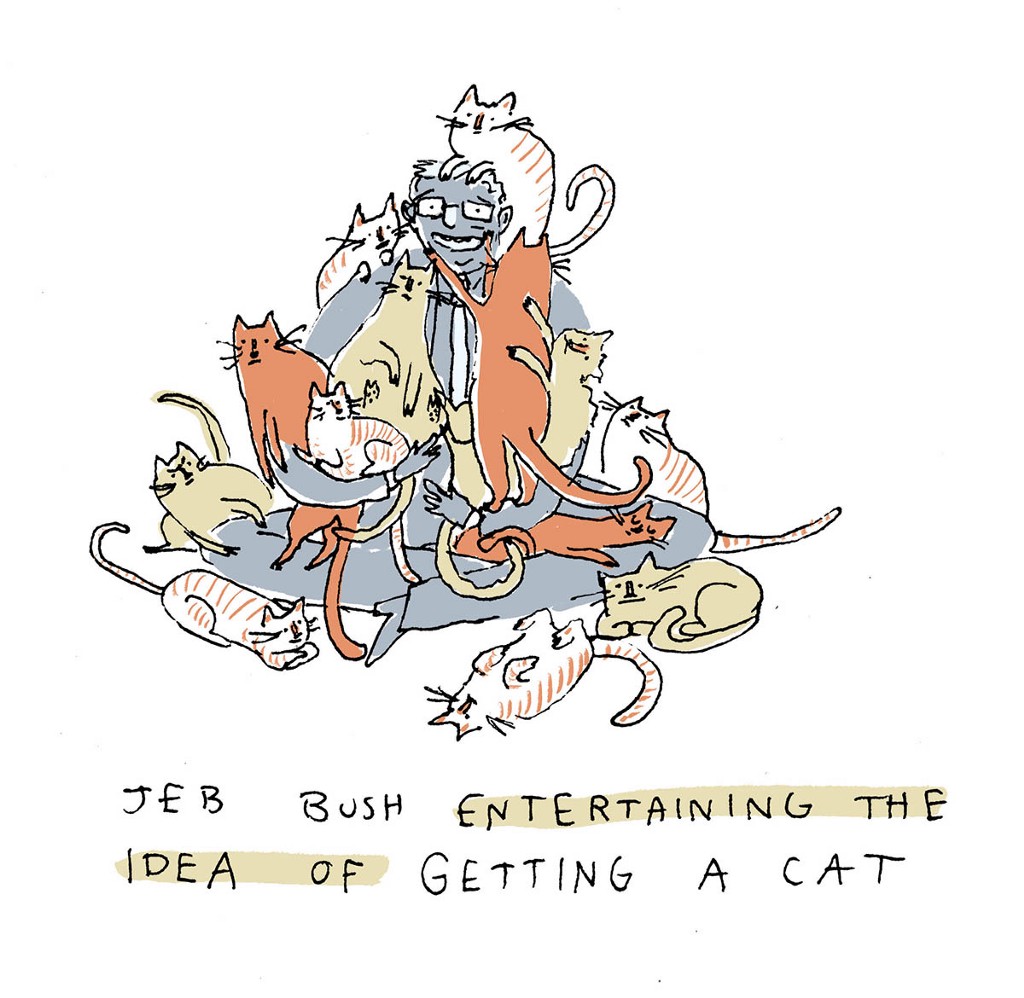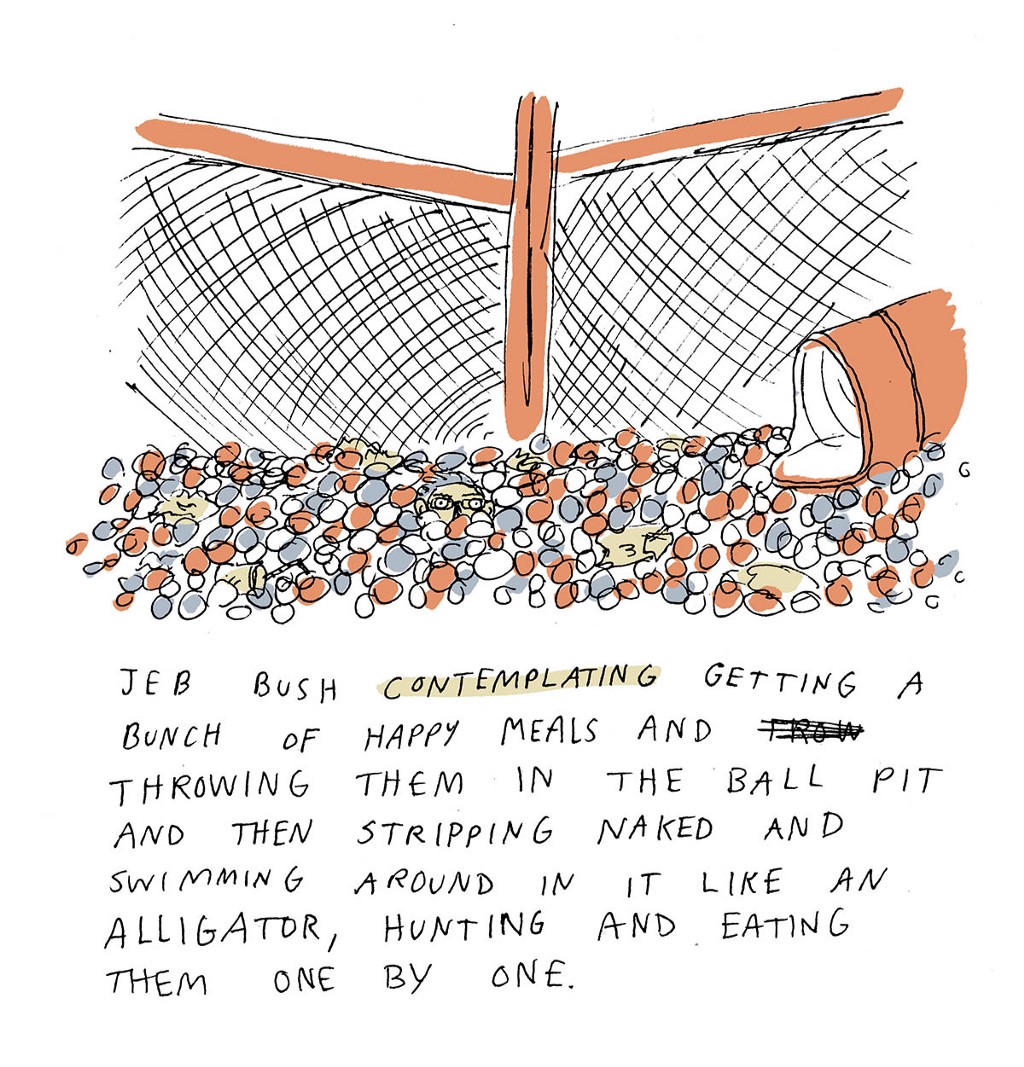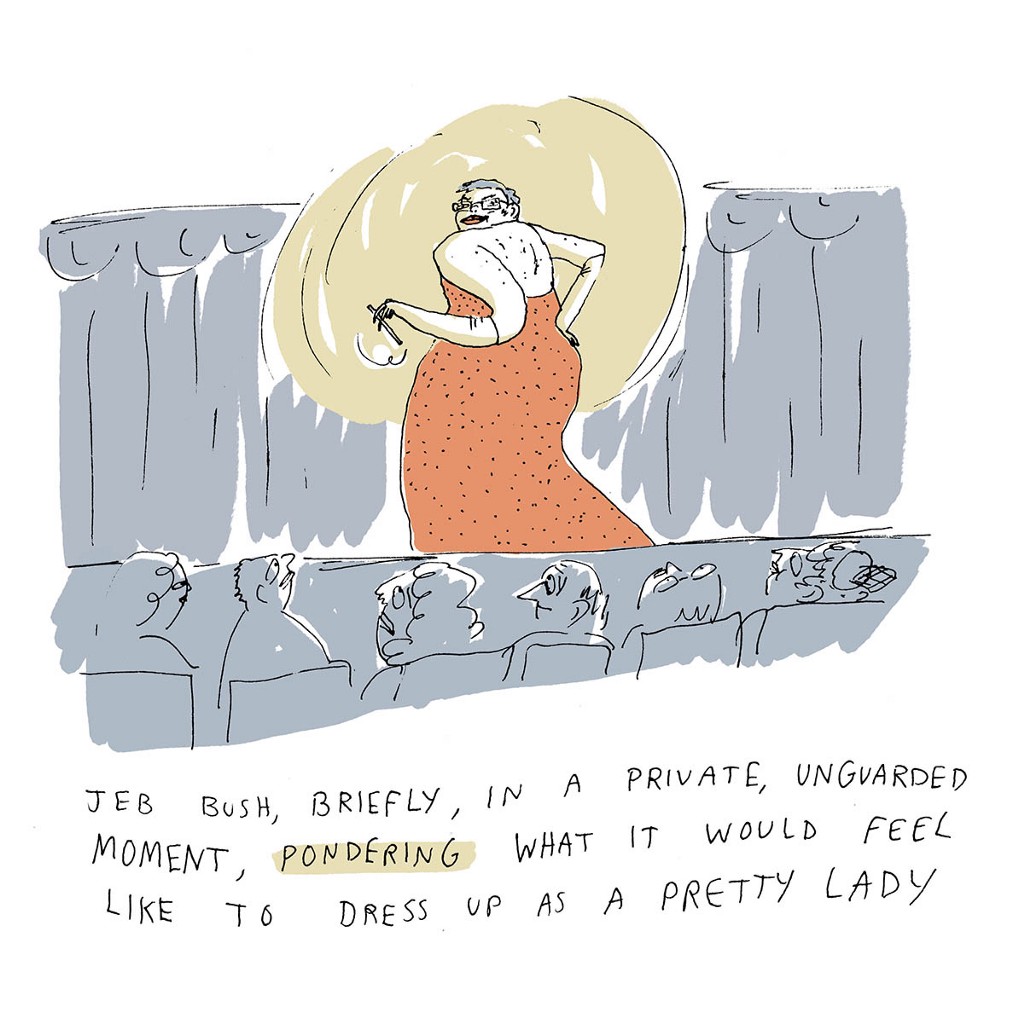An Interview with @ColdSpecks
by Safy-Hallan Farah
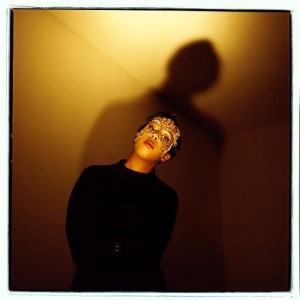
Geniuses is a series where we interview geniuses from all walks of life. For the second installment of Geniuses, we’re talking to Somali-Canadian singer @ColdSpecks who just wrapped up touring with Sufjan Stevens.
Are you a genius?
No, I don’t know how anyone could claim to be. I only strive to make my artistic output as great as it can be. Once it’s released, it no longer belongs to me and it is for other people to decide. It’s all just a matter of opinion. I do think that if your art isn’t polarizing, it’s probably very dull.
How is your art polarizing?
I don’t think it’s for me to say. I try to make music that does not fit any particular mold. I want to challenge myself and others. Sometimes people love it. Sometimes people hate it.
My first name ain’t baby, it’s Ladan — Miss Hussein if you’re nasty. R.I.P Al Spx. #dontgivenofucknomore
— Cold Specks (@coldspecks) March 20, 2015
What made you decide to reveal your real name?
In 2010, people started asking who was behind Cold Specks. They wanted a name. I gave them Al Spx because I wasn’t comfortable with having my real name out there. This was because I had not informed my family about dropping out of university to pursue a career in music (total taboo for a female in our Somali community). Five years later, they are informed and are incredibly supportive. Now, there is no need to hide behind a fake name. It also can get confusing because people assume Cold Specks is a band. Basically, no need for two pseudonyms.
How have your fans and the Somali community taken the reveal?
I noticed some Facebook unlikes on the day I made the post. I chalked it down to southerners who probably thought I was a gospel singer. The name Ladan Hussein probably didn’t sit right with them. The Somali community has been wonderful. I’ve always been pretty respectful of the culture (maybe I’ve been too unnecessarily conservative at times). There’s only been very positive responses from Somalis.
Would you ever get rid of the Cold Specks moniker altogether? How has being called Cold Specks all these years helped you navigate your own life with regards to music?
No. I like the Cold Specks moniker. It allows me to be more playful. I am a singer and I write songs but I never want to be pigeonholed into a singer/songwriter category. I suppose this is my way of avoiding that. I’ve always been a fan of people like Steven Ellison (Flying Lotus), Natasha Khan (Bat for Lashes) and even Bowie. Stage names can be fun and I find it helps to better establish an atmosphere around the music. It definitely helps with removing any inhibitions while performing. I can become something else and transcend. I find it very thrilling.
Do you allow yourself to be playful in all facets of life?
I was a miserable little shit several years ago. I guess I took my “quarter-life crisis” pretty hard. Over the last few years I have certainly noticed a change in my general demeanor. I’m happier and I think a lot of that is due to being active and productive. I was a playful child and it’s taken me years to get back to that. I actually just signed up for modern dance classes if that says anything.
How were you miserable?
Many things played a part. I wanted to write songs in a certain way. I could sing quite well but I wasn’t a very good musician. I didn’t have any friends. I was lonely and inactive when I wanted so desperately to be surrounded by like-minded people. I had dropped out of university because I didn’t find it fulfilling. I was in a great deal of debt. All that led to weight gain and more misery. There were a few shitty years.
What made you decide you’re going to finally do what you want and take steps toward being less miserable?
Lying to the people I loved the most because I was silly enough to think they would not accept me took a huge toll. As soon as I was honest and realised how accepting my family was, things started to change. I wasn’t living a lie anymore. Singing and touring the world made me very happy. It was as simple as that.
Were you communicating regularly with your family during that period of misery?
Yes but I was lying about my life and my mother could see right through me.
Every Somali girl I know has SOME KIND of double life. Did you ever have a double life before music?
Yes, I’ve had several lives I’d rather not dwell on! It’s funny I see my little cousins going through it right now and I find it incredibly amusing. Especially, when they are straight up lying to their mothers while I’m around. I see them get away with so much shit and it’s hilarious. I don’t have little sisters so I find myself guiding them constantly.
Do you guide them to protect them from the consequences from their lies or do you guide them to not lie? I feel like if you wanna be the “down” older cousin you kind of have to not get on their case? It’s hard, though, when you also probably really still think obedience to parents is very important. (I know I do.)
We’re honest with each other. They tell me things they would rather not tell their mothers and I provide them with the best advice I can. They’re not bad kids, they’ve just grown up differently. We are the children of the diaspora. I try to teach them to be careful and respectful without sacrificing who they are as young women. Somali mothers in the western world can be suffocating without realising. What I find most amusing is our mothers didn’t grow up wearing hijabs and abayas. Settling into a new world has made them hold on to religion more. I think it’s understandable. I like the way Ugaaso Boocow makes light of Somali mothers. It’s not until you find old pictures of your mom hanging out with her fro out, in a dress that shows off her skin and her figure that you start asking questions.
Do you ever want children?
I’d love to someday! Not anytime in the near future. I’ll probably get a dog first and see how that goes.
Young Reporters Today Are Precious
“Young reporters today are precious about covering what they’re passionate about, and more publishers want to give them that chance.”
I Ate Mushrooms and Went to the 'Entourage' Movie
by Stefan Heck
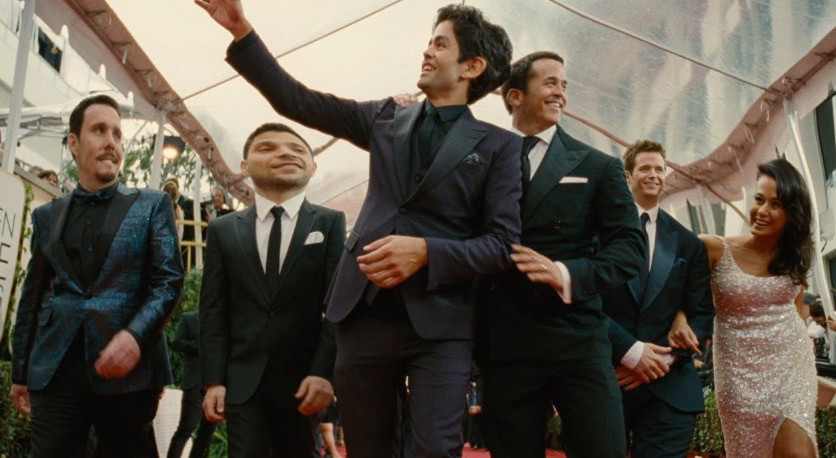
Certain pairings are timeless classics. Peanut butter and jelly. Sports and beer. Marmaduke and laughter. And now, in 2015, psychedelic mushrooms and the Entourage movie. Vince, Ari, and the rest of the boys are back in town, and what better way to experience a two hour cameo-fest than on hallucinogens in a theatre full of guys named Nicky?
6:51 PM
I buy one ticket to the opening night of Entourage. My buddy Reptar drops off a ziplock bag filled with Psilocybe mexicana. I have never been more ready for something in my entire life.
7:00 PM
I ingest the mushrooms. I print out the tickets. 8:45 PM. Let’s do this.
7:21 PM
I’m hungry. I quickly run out to Subway and pick up a footlong Cold Cut Combo — Italian Herbs & Cheese, naturally. I go for the combo: Sun Chips, Diet Coke. Hell yeah, player.
7:56 PM
Back at my apartment, the mushrooms start to kick in. I am aware of my thoughts. I am aware of my breathing. I am aware of my own awareness, and I’m aware that I’m aware of that, too.
8:03 PM
I vomit up the Cold Cut Combo into the toilet. You can still tell I went with Italian Herbs and Cheese because there are bits of Italian herbs and cheese floating around, inside the toilet. I consider going back to Subway and asking for a refund, but decide against it when I realize that I’m dying. I am going to die. Death has come for me on my bathroom floor.
8:48 PM
I’m still in front of the toilet. I remember reading something about ego death on Erowid. Is that what this is? I say the names of friends and loved ones out loud in a futile attempt to maintain a grasp on the last threads of my humanity. Mom. Dad. Grandma. Grandpa. Dave. Thank you, Dave, for letting me use your Netflix account. I’m sorry your recommendations are filled with National Geographic documentaries about Russian serial killers.
9:04 PM
What did I want to be when I grew up? Have I grown up? Is this what I am? Is this what I wanted? I want to talk to my childhood self. I want to assure him that high school won’t be that bad. I want to warn him about September 11th, but also let him know that jokes about September 11th are okay now.
9:16 PM
I finally manage to get up. I sit down in front of the TV. Like Mike is on TBS. “Very Funny,” indeed. I settle down to watch. Maybe enjoying one of my favourite movies will calm me down.
9:26 PM
Okay, why would a halftime show contest involve an actual NBA player playing in that very same fucking game. Are you shitting me? He should be in the locker room, talking strategy with his coach and teammates. What about the potential for injury? Can you imagine the controversy? “Star Player Blows Out ACL During Halftime Show.” What a disaster. No way would anyone clear that.
9:31 PM
And another thing, you have the NBA rights, and you make up a team called the Los Angeles Knights? Those jerseys look like shit, and the logo is garbage. They’re like something from a movie where they didn’t get the NBA license. But they did! You had the license! Make him play on the Clippers! This was back when they sucked, so you’ve got the added bonus of taking a real-life laughingstock to the top of the standings. Jesus. How did you fuck that up?
9:38 PM
Okay, wouldn’t he have had to enter the draft or something? What’s the CBA have to say about this? I mean, yeah, it’s a fairly unprecedented situation, but there has to be something in there that covers it. Like, it seems unfair to the rest of the league that the Knights get first dibs on this child prodigy.
9:41 PM
I just remembered how this movie ends. Calvin loses his magic shoes but still gets the game-winning assist. What’s the lesson there? Even if you lose your basketball powers, you’ll still be good enough to play in the NBA? That’s bullshit. That is total bullshit.
9:47 PM
Holy shit… the visuals are fucking crazy right now. The walls are melting and freezing at the same time. I just feel… at peace. Everything is going to be all right.
9:52 PM
It’s the scene where Calvin throws paint all over the side of NBA superstar Tracy Reynolds’ house. I get irrationally angry. No fucking way would he just laugh that off. First of all, it looks like total shit. You have completely ruined the previous paint job. It’s orange fucking paint and you just fucking splattered it everywhere. You know how much that shit is gonna cost to get removed? Christ, of course you don’t — you’re an orphaned child playing professional basketball somehow. And don’t even get me started on just, like, the basic underlying premise of the movie. A kid playing basketball? Okay, so let’s just… let’s just for a minute assume that a pair of running shoes struck by lightning somehow magically absorbed the skills of Michael Jordan. All right. Even if these shoes imbued a thirteen-year-old boy with the power to play basketball like His Airness, he’s still, like, under five feet. The shoes don’t give him the strength of a grown man, just the skills (which, again, come the fuck on.) You think someone like Dirk Nowitzki isn’t just going to slam him down to the ground? Jesus, what about Rasheed Wallace? Rasheed Wallace would ruin a kid, no question. Ball don’t lie, you pre-pubescent motherfucker. Let’s be real here: even if Calvin somehow got into a fucking National Basketball Association game, he’s suffering a season-ending (if not career-ending) injury within the first five minutes.
10:07 PM
Oh shit, the Entourage movie. Right. It started like an hour and a half ago. Damn it. Okay… let’s think this through. Maybe if I call the movie theatre, they’ll restart the movie for me. I’m sure they’ll understand.
10:13 PM
I read the Wikipedia summary of the Entourage movie. Sometimes it looks like the words are moving around. Pretty crazy.
10:17 PM
All right, the Like Mike page is total crap. It’s filled with fragments and run-ons, and it doesn’t even touch on how unrealistic the whole thing is. It just treats the reader like a child. Like a stupid, stupid child. Looks like I have some work to do.
10:51 PM
Someone named Lipnicki91 locks the Wikipedia page for Like Mike and reverts all my edits. This is fascist bullshit.
10:55 PM
Lipnicki91 sends me several threatening private messages and a link to the Wikipedia article for “Guns.”
11:02 PM
I am now banned from Wikipedia. Fuck this, I’m going to bed.
Red Dirt Girls
by Casey N. Cep

We were lost, but not really lost. We were lost in the way that you can get lost with a GPS on your phone, which is to say we knew exactly where we were, even if we didn’t quite know where we were going. I had entered the wrong address, so instead of arriving at the movie theater, here we were, five miles away on a dirt road in Alabama, trying to get turned around.
I kept thinking of a song by Emmylou Harris called “Red Dirt Girl.” I know that “County Time” is supposed to resurrect classic songs, but let me stretch the years a bit to tell you about this song. It’s nowhere near as old as the others, but it’s timeless in a way that listening to it, you don’t believe for a minute that Harris released it as recently as 2000.
“Me and my best friend Lillian and her blue-tick hound dog Gideon,” it begins, “sitting on the front porch cooling in the shade, singing every song the radio played.” Country music gets maligned as melodrama, and yet the best songs are mindful of that genre. This one might only be about “two red dirt girls in a red dirt town,” but it’s also a pointed look at life in mid-century America. Take Lillian’s brother: One second he’s tinkering with a ’49 Indian, all flesh and grease, but the next he’s dead, just cold words on a telegram. “He never got farther than Vietnam,” Harris sings, “now he’s lying somewhere about a million miles from Meridian.”
Lillian herself rises and falls in only a few sweeping lines. “She grew up tall and she grew up thin” has to be one of the most delicate ways of describing a woman’s beauty, while “her daddy turned mean and her mama leaned hard” is just as delicate a way of describing poverty and abuse. Lillian leaves one kind of broken home for another, getting pregnant and trying to make a go of it with the father: “She was only twenty-seven, and she had five kids. Coulda been the whiskey, coulda been the pills, coulda been the dream she was trying to kill.”
It’s not really clear why some people get away from small towns and others never get the chance, or why some flourish there while others languish. “Red Dirt Girl” takes seriously both fates, but also the obscurity of either: “There won’t be a mention in the news of the world about the life and the death of a red dirt girl named Lillian, who never got any farther across the line than Meridian.”
Harris says the song came to her while she was driving through Meridian on her way to Louisiana. It wasn’t just the rust-colored road that set her to writing; when she got to New Orleans she saw the film Boys Don’t Cry. “It unnerved me,” she says on her website, “not only because of the violence, but also because of the underlying theme of how trapped those young people were. We all come into this world with so much potential and so many dreams. Who knows why some people escape and other people don’t?”
It is one of those things you just don’t know, about yourself or the ones you meet: how they escaped, or how they found their way home. “Somewhere out there is a great big world, that’s where I’m bound,” Lillian tells her best friend, the one singing this sad song in her memory, “and the stars might fall on Alabama, but one of these days I’m gonna swing my hammer down away from this red dirt town. I’m gonna make a joyful sound.”
The hammer falls and Lillian never gets away, but she finds her way to us through the song. I don’t know when melodrama became a dirty word or when sentiment became something to scoff at, but they’ve never ever felt that way to me; these stock red dirt girls and their stereotypical red dirt town feel very real to me. This hammer song has a way of coming alive when I least expect, like earlier this year when I found myself there on a stretch of Alabama’s crimson clay.
I think of “Red Dirt Girl” in times of sadness, too. Another one of Harris’s delicacies is this sinking, searching account of that feeling: “But one thing they don’t tell you about the blues when you got ’em, you keep on falling cause there ain’t no bottom. There ain’t no end.” It’s there, though, that I remember the song isn’t only about brokenness. The one singing it was a friend, a best friend, to Lillian, and so whatever sadness lives in these lyrics, there is also friendship, a rarer thing than even the falling stars that those red dirt girls saw falling over Alabama.
Photo by / // /
Terranova, "Goldilocks"
Remember all those clubs in the ’90s that thought a good way to seem mysterious or sophisticated or whatever the dumbass in charge figured would signal “European” was to project videos like this one on the wall of darkened room towards the back, and how you’d pass by for a couple of seconds and look to see what was going on and think, “I have had a lot of drugs tonight but boy have I not had enough drugs to make this seem in any way like something I’d be suckered into”? What? You were 12 when the ’90s ended and your memories of that decade mostly involve Nickelodeon and “Boy Meets World” and N’Sync and every time you hear me talk about that era as some kind of period in which grown-up things happened you roll your eyes because it is basically ancient history to you and it’s both comical and depressing to see an old man look back to a time in which you were essentially a child with the nostalgia of someone who realizes he will never be young again? You’d laugh at how pathetic I sound if a small part of you didn’t feel sorry for me? You don’t care who Kurt Cobain was and you wish I’d stop talking about him? God, the demographics of this site have really changed. Anyway, for the few of you out there who know what I’m talking about, enjoy. And don’t die anytime soon, I’d hate to be the last one left.
New York City, June 3, 2015

★★★ A sunbeam came through the mottled cloud cover and found the little alley where a man stood. Breeze tossed the flax blooming opportunistically where last year’s opportunistic jimsonweed had been cleared away. By afternoon, the sky had gone over to white and blue. Jackhammers rattled down by the street and a cool slow breeze moved along the roof. Old rainwater streamed from the cushions on the seats when they were flipped up to dry. There was enough wireless signal to work in the sun on the fire escape, if not up top. By commuting time, the chill was almost autumnal. Contemplation of a disappointingly cottony white nectarine was interrupted by the three-year-old calling “Look at the sky!” and a view of pink gauze, pink stripes, and a sort of shapeless pink shimmer southmost.
Checking In With America's First Suburb
by Brendan O’Connor

198 Columbia Heights, #2
• $5,600 per month
• Two bedroom, two bathroom
• 1,150 square feet
• Nearest subway: 2 and 3 trains at Clark Street
On Wednesday, an empty two-bedroom apartment in a twenty-five-foot-wide townhouse in Brooklyn Heights, with views of the promenade, the East River, and Downtown Manhattan, was filled with nothing but sunlight. The previous tenants had been “a little bit difficult,” Linda VanderWoude, a broker with Halstead Property, told me, and now that they had cleared out, it was a relief to be able to show the recently painted apartment to prospective renters. “There’s a limited number of buildings on Columbia Heights with this direct view,” VanderWoude said. “It’s all about presentation.”
Brooklyn Height’s claim to fame is as America’s first suburb, and, these days, it is still Wall Street’s most convenient. “There’s such immense wealth in Brooklyn Heights,” VanderWoude, who has lived in the neighborhood since 1985, said. “This area attracts a lot of Wall Streeters, a lot of tech people. It takes just one subway stop to get over.” But it was not always so: After the construction of the Brooklyn Bridge, the Heights had fallen into such disrepute that by the nineteen forties, Robert Moses planned to run the Brooklyn-Queens Expressway through the middle of the neighborhood. “The Brooklyn Heights Association of homeowners, hanging onto the old elegance in the neighborhood’s core, fought for an ingenious compromise,” according to the New York Times. “The expressway was built in two tiers along the cliff facing the water, and its pedestrian esplanade, known as the promenade, opened in 1950 above it.” This, it would turn out, was a seminal moment for the burgeoning preservationist movement in New York City, and led in kind to an idea of “brownstone Brooklyn” that set the pattern for — and motivates the gears of — gentrification in the borough still today.
The landlord at 198 Columbia Heights, VanderWoude told me, owns several other properties in Brooklyn Heights — “I think” — making him the largest property owner in the immediate area. This person also owns 196 Columbia Heights, 150 Columbia Heights, and 141 Columbia Heights. While discussing the many units owned by this landlord, VanderWoude brought up a nearby unit, the famously vacant brownstone at 194 Columbia Heights owned by a local psychologist. “I keep trying to get my friends to go sit on his couch,” she said. According to Department of Finance Records, 194 Columbia Heights was purchased in 1969 by one Austin Moore. “He’ll never sell it,” VanderWoude said, even though “in its current state, he could probably do about eleven, twelve million for it.” Next door, 192 Columbia Heights was listed in the fall for sixteen million dollars; the house was re-listed at fifteen million in April. “It’s unusual to have something so valuable be vacant,” VanderWoude griped.*

141 Columbia Heights, #5B
• $4,800 per month
• Two bedroom, one bathroom
• 800 square feet
• Nearest subway: 2 and 3 trains at Clark Street
“What we’re doing here in this building, where possible, is combining — there’s a demand for big apartments, and you just don’t find that a lot in the Heights,” VanderWoude said. This apartment — which was already laid out as a two-bedroom, no conversion necessary — has been on the market for over two months, but VanderWoude said that was because it was listed too early. “Now that it’s vacant, and the new photos came in, and they turned out terrific, this’ll rent now. It was just a problem,” she said. The previous tenant changed jobs and was moving, and he didn’t want to lose his security deposit, so he insisted that the apartment be put on the market. But prospective tenants struggled to see themselves in a space someone was still living in, apparently, and the apartment didn’t rent. “When someone forces your hand — in this case, the customer did — I told him, it’s going to hurt you, and, instead of listening to somebody who actually does this for a living, he didn’t, and it did.”
VanderWoude pointed out that through one window, between a narrow sliver of buildings, one can see part of the Brooklyn Bridge. Through another, one can see 150 Columbia Heights, also known as the Squibb Mansion — the Squibb Corporation was a pharmaceutical company founded in Brooklyn in the mid-nineteenth century that later merged with Bristol-Myers to become Bristol-Myers Squibb. One apartment in the Squibb Mansion, on the top floor, with private access to the roof, has just been vacated. It hasn’t been listed yet, because there is still Crayon on the walls from the previous tenants’ children.
We walked across the street to see it, and to see Manhattan and the rest of Brooklyn Heights from the roof. VanderWoude reflected on how the neighborhood has changed in her thirty years there. In the seventies and eighties, “You had the financial decline in New York City, all the troubles in the city — and you know, it comes across the river, obviously. And then people started moving in, buying the brownstones again, turning them into single-family or rentals,” she said. “It was always a very quiet neighborhood, but now you get a lot of tourists with a lot of books. I think Brooklyn just overall has just become a place to come and live and visit. Things like the Brooklyn Bridge Park have only added to it.” She pointed out a building where Norman Mailer lived, and the many buildings that are owned by the Jehovah’s Witnesses.
There isn’t much new construction in Brooklyn Heights, and what there is is highly contested: A community group called Save the View Now is suing the Brooklyn Bridge Park Corporation and the developer of a hotel and condominium building at 60, 90, and 130 Furman Street, called “the Pierhouse” — which Gawker’s Hamilton Nolan called “The Worst Building in the Gilded City,” as the development is essentially located on top of the Brooklyn Bridge Park — for allegedly violating an agreement made with the Brooklyn Heights Association not to block views of the bridge. The Brooklyn Eagle reported that, at a hearing on Tuesday, an attorney for the defendants “showed photos illustrating that Pierhouse allows more of a view of the Brooklyn Bridge from the Promenade horizontally, if not vertically, than did the warehouse building that was there before.” The judge extended a temporary restraining order on further construction and promised to make a ruling in the case within forty-five days.

360 Furman Street, aka One Brooklyn Bridge Park, #823
• $3,400 per month
• Studio
• 815 square feet
• 4 and 5 trains at Borough Hall
Down Furman Street, at the other end of the Brooklyn Bridge Park, there is an enormous building that looms between the East River and the promenade. It looks like a new construction, but is actually a converted Jehovah’s Witness printing plant. The three-story penthouse was relisted in April at thirty-two million dollars — Brooklyn’s most expensive condo — after the owners decided they didn’t need all that space. “A few months ago, Stuart Leaf was sitting in his Brooklyn Heights apartment when he got a call from his wife asking when he’d be home,” the Wall Street Journal reported in April. “It turned out ‘we’d both been home for three hours,’ he said — their roughly eleven-thousand-square-foot condo is so large that neither one realized the other was there.”
While 360 Furman Street is a condominium building, the apartment I saw was for rent, not sale. Penelope Stipanovich, a real estate agent with Sotheby’s, told me that the owner is putting it up for rent before giving it to his son. The last recorded sale of the condo was filed in February 2013, for just under seven hundred and forty thousand dollars. Stipanovich has had some difficulty renting the apartment at #823, because, despite its size — eight hundred and fifteen square feet, with twelve-foot ceilings — it is technically a studio. After having professional photos taken, though, and a recent open house, she does not expect it will be on the market much longer.
Residents at 360 Furman Street — also known as One Brooklyn Bridge Park — have fought, alongside others, against a plan to build two more condo buildings next door, suing last summer to prevent construction that would include thirty percent affordable housing. “The bleeding-heart liberals, of which many of my great friends are, say we need affordable housing,” Judi Francis, president of the Brooklyn Bridge Park Defense Fund and a resident of Cobble Hill, told the New York Times. “Affordable housing is a noble and fine thing. But a park that has to pay for itself is not supposed to pay for the ills of the city.” Construction of the park only began in 2008, after a two-decade long bureaucratic struggle to come up with the money to pay for it ended in a public-private compromise, wherein revenue from residential and commercial developments along the park’s perimeter would be used to pay for the park’s development. Paying for — or, at least, ameliorating — the ills of the city is, in fact, exactly what the park is supposed to do.
The park itself is a public good that private development is paying for, and if that private development can pay for some other public goods at the same time, why shouldn’t it? Still, Brooklyn Heights itself is more expensive and exclusive than ever before: According to market analysis by aptsandlofts.com, between 2003 and 2013, the average co-op sale price in Brooklyn Heights increased by a hundred and twenty-six percent; the average townhouse sale price increased by a hundred and fifty-two percent; and the average condo sale price increased by two hundred and eight percent.
The section of the park visible from 360 Furman Street #823 is not yet complete, however. The apartment’s windows are tall and broad, but the view is narrow, facing north and framed by two arms of the building reaching out towards Midtown Manhattan. Below the apartment is a barren, concrete expanse, where Smorgasburg sets up an outpost on the weekends; eventually, this area too will turn green as the park expands. Also visible is the BQE and, above it, the promenade. The building, which attracts a lot of “young professionals,” is remarkable for its full-service amenities, Stipanovich said, which include a virtual golf chamber and yoga and meditation rooms. New York’s original suburb endures.
*Due to a transcription error, this passage initially stated that the owner of 194 Columbia Heights also owned 198, 150, and 141 Columbia Heights. We regret the error.
Photo of 360 Furman St. / One Brooklyn Bridge Park by CCM
A Complete Taxonomy of Internet Chum
by John Mahoney

This is a bucket of chum. Chum is decomposing fish matter that elicits a purely neurological brain stem response in its target consumer: larger fish, like sharks. It signals that they should let go, deploy their nictitating membranes, and chomp down blindly on a morsel of fragrant, life-giving sustenance. Perhaps in a frenzied manner.
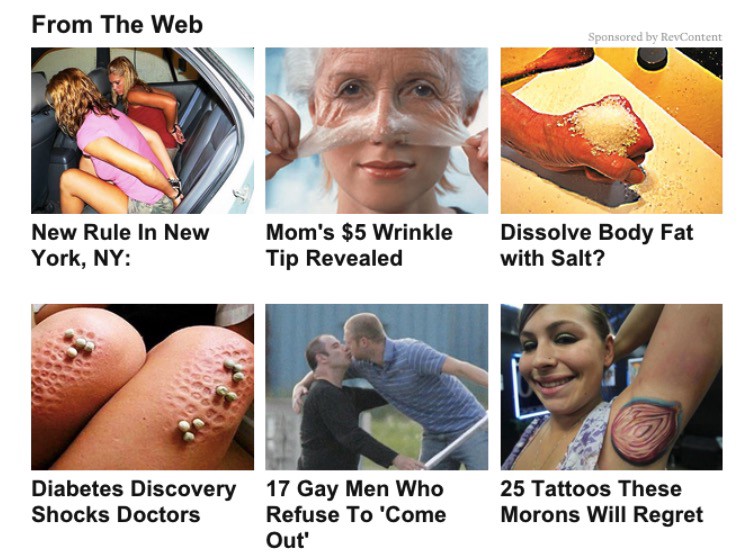
This is a chumbox. It is a variation on the banner ad which takes the form of a grid of advertisements that sits at the bottom of a web page underneath the main content. It can be found on the sites of many leading publishers, including nymag.com, dailymail.co.uk, usatoday.com, and theawl.com (where it was “an experiment that has since ended.”)
The chumboxes were placed there by one of several chumvendors — Taboola, Outbrain, RevContent, Adblade, and my favorite, Content.ad — who design them to seamlessly slip into a particular design convention established early within the publishing web, a grid of links to appealing, perhaps-related content at the bottom of the content you intentionally came to consume. In return, publishers who deploy chumboxes receive money, traffic, or both. Typically, these publishers collect a percentage of the rates that the chumvendors charge advertisers to be placed inside the grids. These gains can be pocketed, or re-invested into purchasing the publisher’s own placements in similar grids on thousands of other sites amongst the chummy sea, reaping bulk traffic straight from the reeking depths of chumville.
Like everything else on the internet, traffic flowing through chumboxes must be tracked in order for everyone to be paid. Each box in the grid’s performance can be tracked both individually and in context of its neighbors. This allows them to be highly optimized; some chum is clearly better than others. As a byproduct of this optimization, an aesthetic has arisen. An effective chumbox clearly plays on reflex and the subconscious. The chumbox aesthetic broadcasts our most basic, libidinal, electrical desires back at us. And gets us to click.
Clicking on a chumlink — even one on the site of a relatively high-class chummer, like nymag.com — is a guaranteed way to find more, weirder, grosser chum. The boxes are daisy-chained together in an increasingly cynical, gross funnel; quickly, the open ocean becomes a sewer of chum.

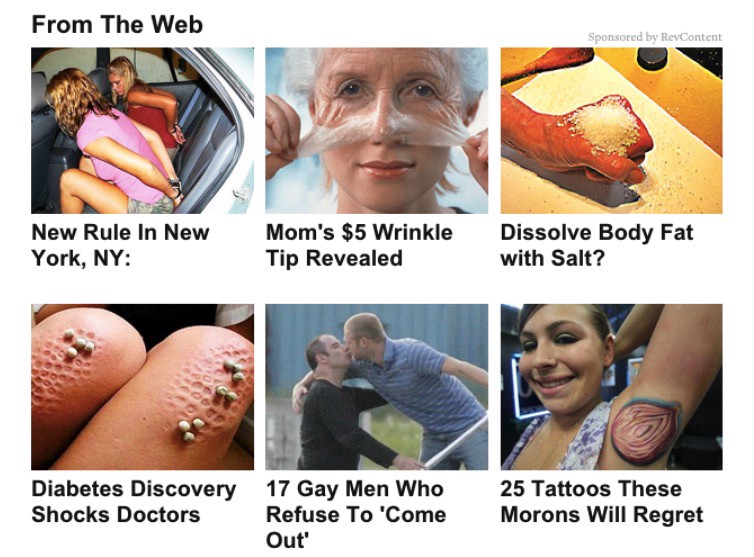
Captured in situ on The Awl on April 20, 2015 at 12:10 pm.
Let’s look again at our first chumbox. It represents several powerfully recurrant chumbox aesthetic subsets.
Top left: Sexy Thing and Localized Rule. We won’t dwell on the efficacy of a Sexy Thing in advertising. But do note this Sexy Thing, enhanced with a chummy sprinkle of sinister context (crime? Young women in handcuffs?). Here the Sexy Thing is combined with a more digital-age enhancement, the Localized Rule. Scouring a visitor’s IP for its geographic location, anxiety can be created by informing you of a brand new reason to find yourself handcuffed in the back of a squad car in your neighborhood.
Top Middle: Old Person’s Face, Skin Thing, and Miracle Cure Thing. Often expressed individually, here we see Old Person’s Face and Skin Thing combined.
Top Right: Miracle Cure Thing. Also self-evident. But do note the subtle tactile neuron firings the image of the pile of salt on the hand elicits — the familiar signature of a Skin Thing.
Bottom Left: Deeply Psychological Body Thing: While on the surface this may scan as a Skin Thing, the regular pattern of indentations made in this woman’s legs by what appear to be frozen peas or stones are in fact designed to trigger feelings of mild discomfort/anxiety amongst sufferers of Trypophobia, a common sensitivity to regularly occurring patterns of holes in surfaces — a discomfort that perversely elicits curiosity, playing on our fixation with the frailties of our bodies and our ultimate fear of death.
Bottom Center: Celeb Thing: Enhanced by potential outing.
Bottom Right: Weird Tattoo (Fresher the Better) and Implied Vaginal or Other Bodily Opening: That the tattoo, another object of chumbox fascination, is placed in an area of extreme nerve sensitivity (the underarm) I can only assume is not at all coincidental.
Let’s move on, for there’s much more to explore.


Captured in situ on NaturalON on February 6, 2015
Top and Bottom Left: Skin Thing/Miracle Cure Thing
Top and Bottom Middle: Disgusting Invertebrates or Globular Masses Presented as Weird Food: Extremely common trope. Very often deployed along with headlines mentioning Diabetes or Testosterone, as seen here.
Top Right: A Pill. Pill imagery is a frequent recurring theme, befitting the chumbox’s tabloidish miracle cure leanings.
Bottom Right: Weight Loss Thing/Extreme Body. Yes, of course.


Captured in situ: “When Did The Art World Get So Conservative?” on New York Mag’s Vulture Blog, March 9, 2015.
Top Left: Deeply Psychological Body Thing. Summoning Freudian dreams of teeth turning to mush in your mouth, with a dash of the same phobic neuron tingle as frozen-pea-leg-indentation-lady. Again probably not coincidentally, both this and the frozen pea images can be found together on a BuzzFeed post on Trypophobia from 2013.
Middle Left: Despite its outwardly benign appearance, this is a clear Skin Thing.
Middle Right: Extreme Body. Both human and not.
Bottom Row: Note the links to the publisher’s own related content — an early chumbox selling point to sites too busted to drive their own coveted “recirculation” traffic. This is rarely seen in the chumboxes of today.


Captured in situ: “I put on a fat suit to understand what it’s like to be your mom” Clickhole (of course), March 6, 2015
Upper Left: Skin thing, Extreme Body
Upper Middle: Tattoo Thing (Fresher The Better), Skin Thing
Bottom Right: Money Thing
Bottom Left & Center: Celeb Thing
Upper Right: Wine. The only booze seen in chumboxes is wine for some reason.


Captured in situ: “Britain’s Oldest Surviving Human Brain Was Preserved In Mud For 2,600 Years,” IFLScience, March 6, 2015.
Upper left: Unfortunately I will file this under Sexy Thing. The sub-standard photo quality indicating a private smartphone shot taken by a public figure, display copy alluding to an investigation — when looking at chum, assume the basest human instincts are in play. It’s a scary place.
Upper Middle: Oozing Food/Egg. A trend without an immediately recognizable psychological precedent? Oozing eggs are extremely common, and are possibly deployed under similar principles as Disgusting Invertebrates or Globular Masses Presented as Weird Food. Or perhaps the resemblance to an oozing pustular sore brings us back into the familiar realm of the Skin Thing?
Bottom Middle: Sexy Thing (upskirt). See note on upper left.
Bottom Right: Skin Thing and Celebrity Thing.
Upper Right: Money Thing.


Captured in situ: “We Bow Down Before This Bus-Riding Scepter-Wielding Superhero” Gothamist, April 1, 2015
Upper Right/Left: It’s the Oozing Food/Egg, now in duplicate.
Lower Right: Implied Vaginal or Other Bodily Opening? My mind is going.

As a final exercise, follow me into the deepest depths. I don’t remember how many chumclicks it took to end up on slide number one of “30 Walmart Shoppers That Are Beyond Messed Up!” but this is what I found there:

Many sites at the end of the chain are composed of little more than chum. Here the traditional 2×3 or 3×3 grid gives way to something far more intensified. On a page like this, the conventions of the Chum Aesthetic are crystallized. I’ve gone ahead and assembled an ultimate chumbox from the choice pickings here.
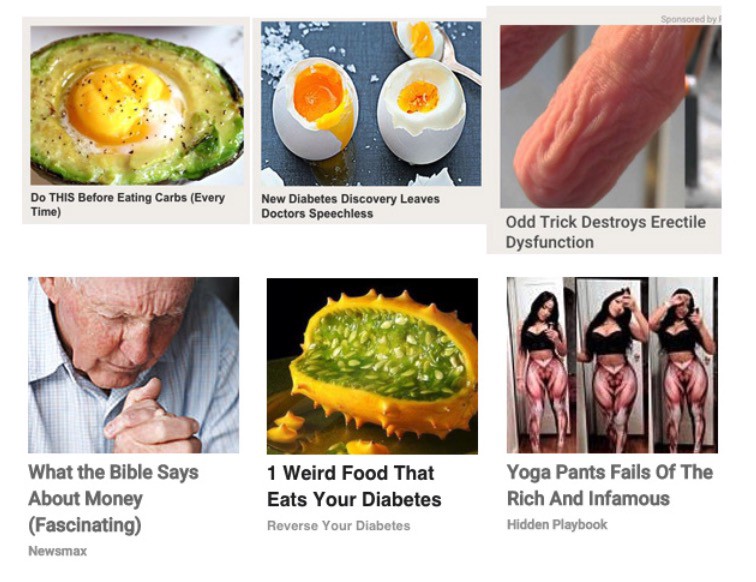
Top Left and Middle: Two Oozing Foods/Eggs (???)
Top Right: Skin Thing, reinforced with the ultimate Freudian male nightmare, the shriveled dick.
Bottom Left: A subtly brilliant mix of an Old Person’s Face and a Money Thing in the display copy, contextualized with a secret of the Bible.
Bottom Middle: A Disgusting Invertebrate or Globular Mass Presented as Weird Food that I’ve actually never seen before.
Bottom Right: A combo Skin Thing and Deeply Psychological Body Thing (woman flayed alive).

That’s probably enough for one sitting. But ask yourself — when was the last time a piece of internet content asked you, “how well do you understand your subconscious mind” and truly meant it? In what other cultural medium can you find the deepest libidinal channels of the brain truly laid bare, with the quarterly pay-per-click revenue report to back them up? Have you lately exercised your deep-seated impulse to view an image of a weeping soft-cooked egg sitting on top of the pimple-encrusted face of Uma Thurman? What are you waiting for? Into the chumpools. The fetid ball of soggy electric fat at the other end of your clicking finger will thank you for the workout.
Photo by Jeremy Sternberg

